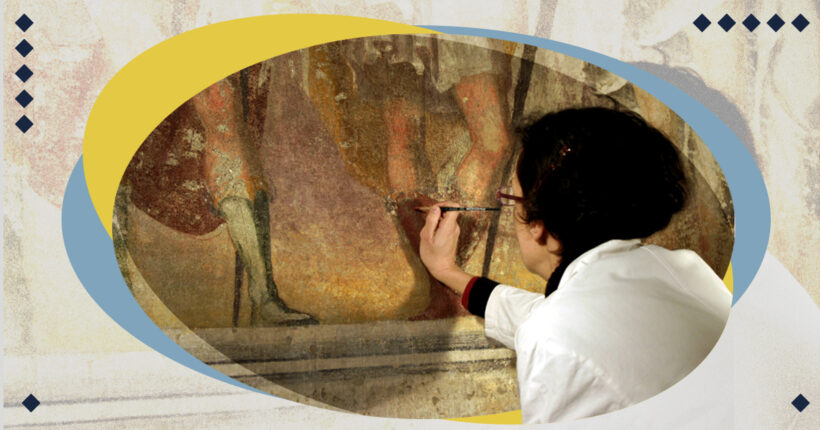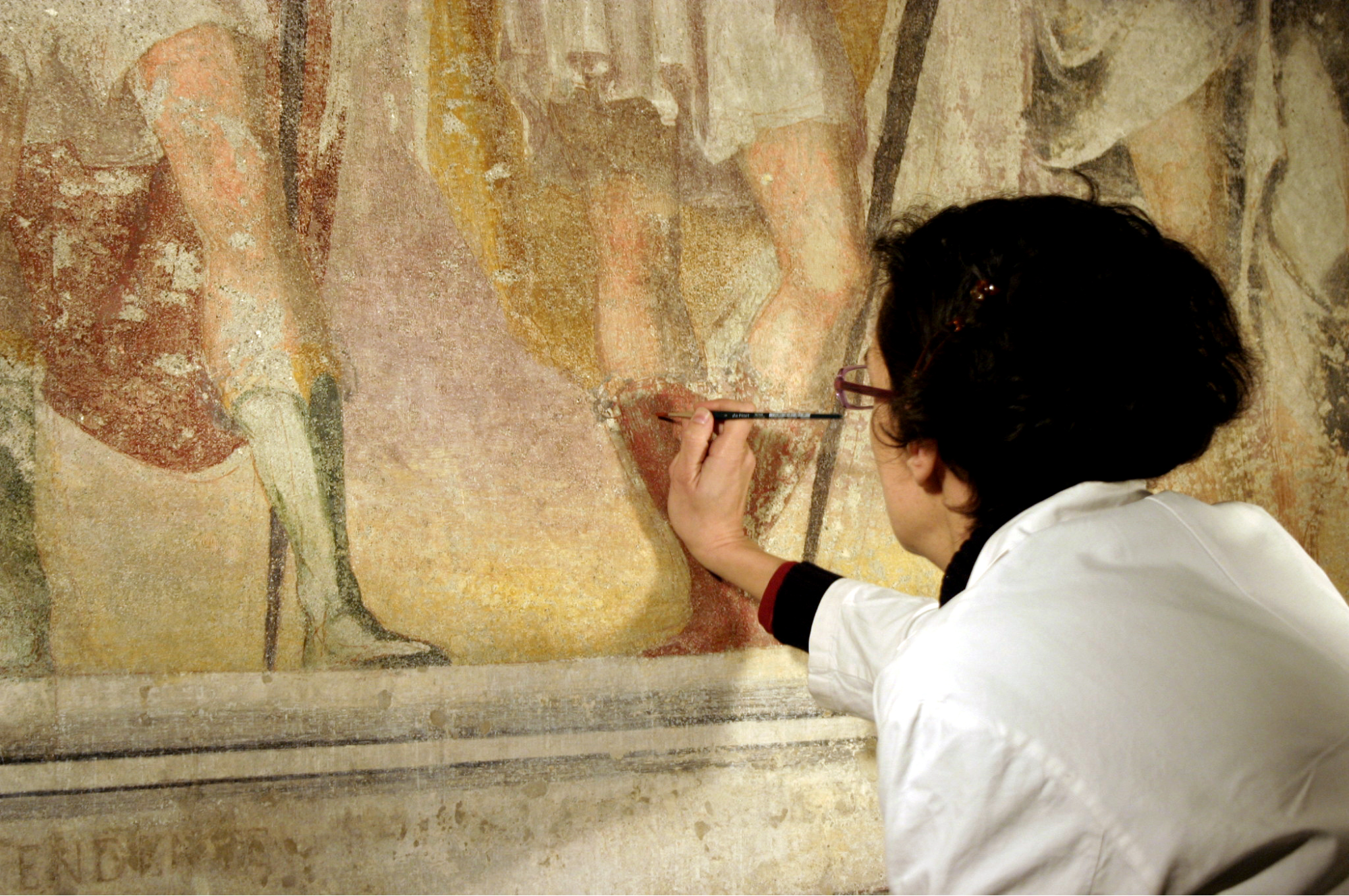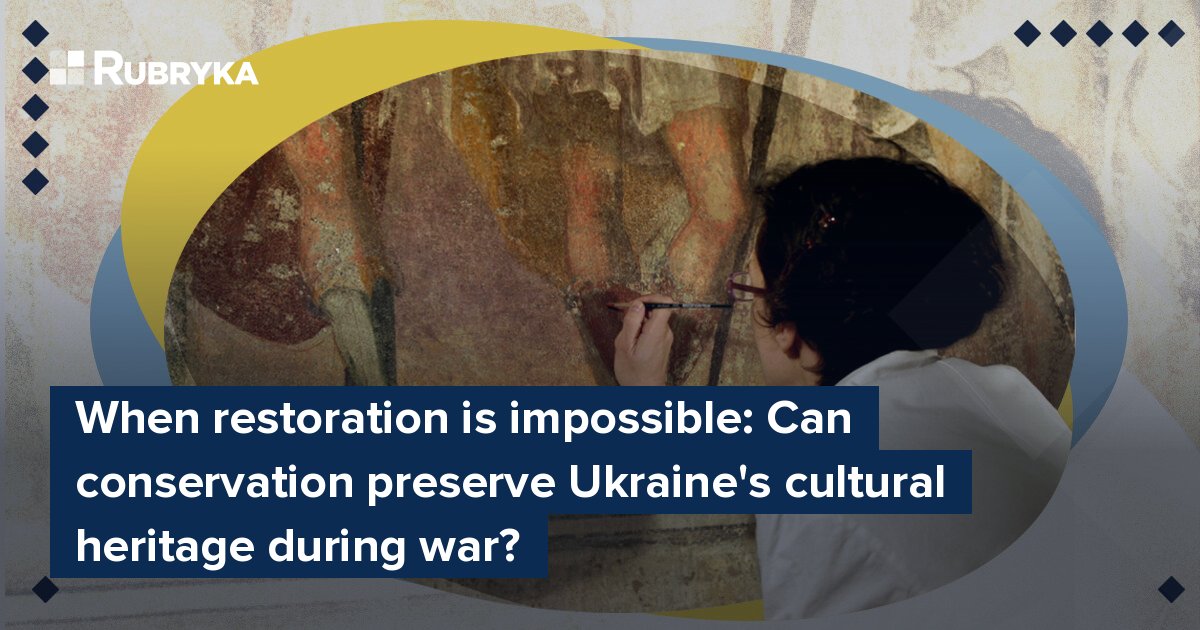
What's the problem?
Since Russia unleashed its full-scale invasion in 2022, Russian forces have damaged or destroyed 1,062 cultural heritage sites in Ukraine, the Ministry of Culture and Information Policy reported in April this year. Nearly a third of these sites were in poor condition before the invasion.
"Today, 30% of our heritage sites are in a state of emergency — usually, these are fortresses and castle complexes," said Svetlana Fomenko, the then Deputy Minister of Culture, in 2021. "Part of the problem is that some sites have no owners. This issue is also addressed in the legislative changes we propose."
Preserving cultural and historical heritage was already quite challenging. Many sites in Ukraine needed restoration, but the country always lacked finances. Now, the funding situation has worsened. So, how can Ukraine preserve its culture and history amid war?
What's the solution?
Cracks, collapsed walls, distorted decorations, and other defects on a heritage site indicate that it's beginning to fall apart. At this point, the site needs either restoration or conservation. Usually, one would discuss restoration. However, considering current financial constraints, conservation might be a better option for Ukraine.
Rubryka talked to Alisa Sviatyna, the director of the Restoration and Technology Center and a certified restoration technologist, to see if conservation could be a solution for preserving heritage sites during the war.

Alisa Sviatyna is the Restoration and Technology Center director and a certified restoration technologist. Photo courtesy of Alisa Sviatyna
How does it work?
When discussing protecting cultural heritage, we need to understand the difference between "conservation" and "restoration." Conservation is a temporary measure that halts a site's deterioration and preserves its current state.
"The goal of conservation is to stop the destruction of an object for a certain period and to document its technical condition until more comprehensive restoration can be undertaken," says Alisa Sviatyna.
On the other hand, restoration involves a much broader range of work to restore a site. This process also includes conservation. Under normal conditions, restoration is carried out at the stage of developing scientific project documentation. However, given limited resources, conservation might be a more long-term solution.
Conservation allows us to delay restoration for several years, keeping sites from further deterioration and maintaining their current state. It also helps reduce the amount of future restoration work needed.
Sviatyna explains the difference using stone as an example. To conserve stone, you only need to clean, reinforce, and protect it from weather. This will stabilize the site and slow its deterioration for a specified period.
Restoration, however, involves much more work. It aims to return the material to its original appearance, which may include filling in chips and cracks and refining its surface.
This difference also affects how quickly conservation and restoration projects can be developed. Conservation projects are quicker to complete because they are less complex and can take three months. Restoration projects require a more detailed set of documents—between 9 and 12 volumes—and can take 4 to 6 months to develop, not counting the time to approve the project and conduct a construction review. Restoration also needs more specialized experts.
"In practice, conservation is completed quickly, while restoration can take years, sometimes even decades," says Sviatyna.

A restorer patiently fills the gaps of the damaged frescos in Sant'Eustorgio church in Milan, Italy. Photo: Giovanni Dall'Orto
Ukraine's main reason for focusing on conservation now is the cost. Conservation is cheaper because of the type of work and because there are fewer required documents. Conservation projects are less expensive than restoration projects because they have simplified requirements.
"Since conservation involves limited, simple types of work, it's less costly than full restoration. Conservation is cheaper and quicker but has a short-term effect," says the expert.
As a result, a site's lifespan after restoration exceeds ten years. Conservation, however, is effective for 3 to 5 years. While this period is shorter, it can halt the destruction of sites during the war. After the war, restoration will still be necessary.
Sviatyna highlights that, given the limited funding, conservation is better than nothing. However, restoration must follow later. She also refers to Ukrainian legislation, which states that conservation work should ensure the safe use of the site only for the time needed for scientific research, developing project documentation, and performing restoration work.
"Currently, all sites damaged by the war need conservation, but not just any conservation — urgent emergency conservation — ensuring the safety of specialists on-site and the absence of active combat nearby," says Alisa Sviatyna.






